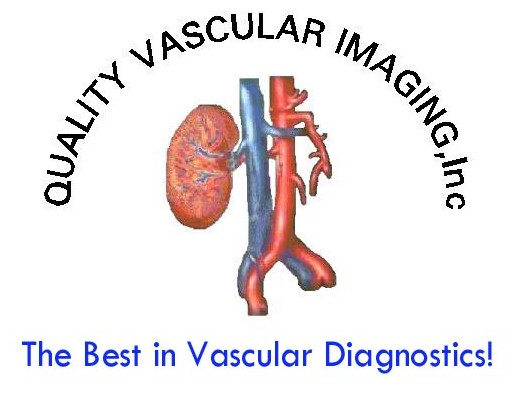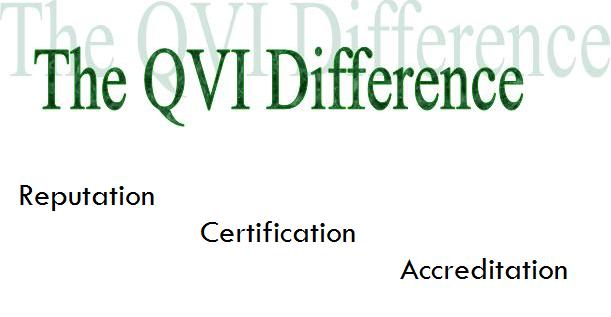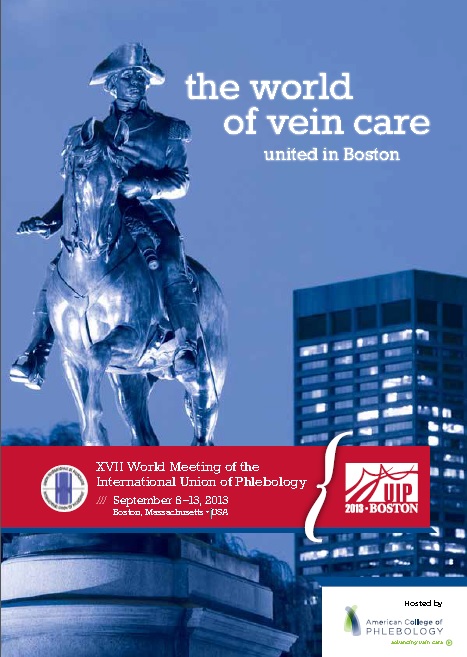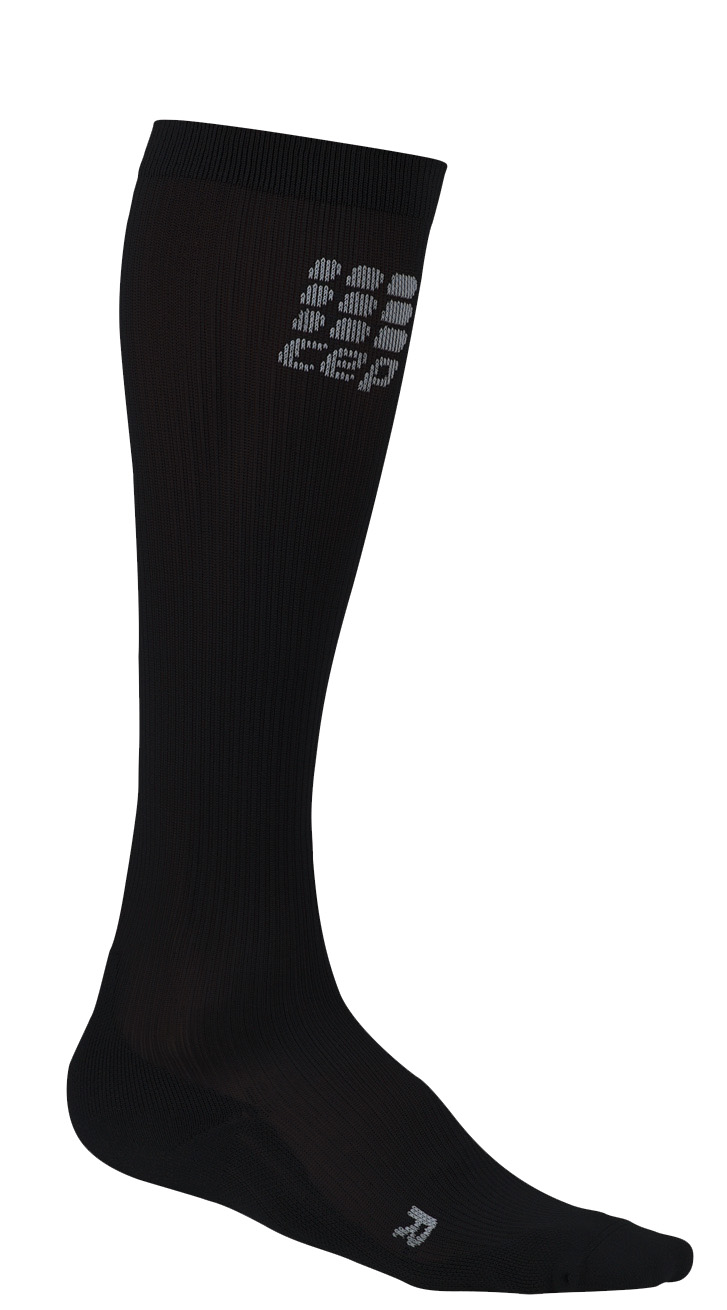

Treatments for Venous Disease Deep Venous Disease - As noted on the venous disease page, treatment for deep venous thrombosis usually consists of intravenous administration of a potent blood thinner to stop the clotting quickly. Many times this involves a hospital stay although some patients may be candidates for outpatient blood thinners. Once the blood is thinned to a “therapeutic level” an oral blood thinner is prescribed for an additional 3-6 months. The blood thinner prevents more clot from forming but does not generally dissolve the clot. The body can dissolve or lyse the clot over time. The formation of a blood clot results in a scarring of the walls of the vein and damage to valves. If extensive, this can result in what is called post phlebitic syndrome leading to discoloration of the skin and ultimately venous ulceration. Therefore, it is important to minimize the extent of the clot by timely treatment. There are a number of additional ways to treat deep venous disease. Valve repair Angioplasty and Stenting Fortunately, these treatments are rather uncommon and reserved for severe disease. Most therapy typically centers around prophylactic measures to minimize the long term consequences. The best and perhaps the most important measure one can take is regular wearing of a quality graduated compression stocking. Please note, these are not the T.E.D. stockings given to you at the hospital after surgery designed to minimize blood pooling in the legs while in bed. These will be ineffective while ambulatory.
Compression
Stockings -
Graduated compression stockings
are often recommended for a variety of venous
conditions. Compression stockings create a
gentle squeeze on the legs, preventing venous
distention and formation of varicose veins. They come
in a variety of styles and colors and are not what
most people typically think of when one mentions
compression stocking. If your physician recommends
compressive stockings, we can measure and fit you
with the best! See compression stockings
page!
For more information on purchasing quality
compression stockings, please visit:
www.compressionsocks.pro
For more on the theory and in depth rationale for
compression therapy, you can watch a video from the
American College of Phlebology ("ACP") by clicking on the
link below. Note: this will take you away from
our site! Please return soon!
Superficial venous disease- By far, dysfunction of the superficial veins is more common. Because the superficial veins are poorly supported beneath the skin, when the valves begin to leak (venous insufficiency), an increased pressure is transmitted into the veins. Over time, the veins tend to enlarge and stretch. It has been estimated that ≈2.5 million people have CVI in the United States, and of those, ≈20% develop venous ulcers. The more serious consequences of CVI such as venous ulcers have an estimated prevalence of ≈0.3%, although active or healed ulcers are seen in ≈1% of the adult population. The overall prognosis of venous ulcers is poor, with delayed healing and recurrent ulceration being common. More than 50% of venous ulcers require prolonged therapy lasting >1 year. The socioeconomic impact of venous ulceration is dramatic, resulting in an impaired ability to engage in social and occupational activities, thus reducing the quality of life and imposing financial constraints. Disability related to venous ulcers leads to loss of productive work hours, estimated at 2 million workdays/year, and may cause early retirement, which is found in up to 12.5% of workers with venous ulcers. The financial burden of venous ulcer disease on the healthcare system is readily apparent: An estimated $1 billion is spent annually on the treatment of chronic wounds in the United States, or up to 2% of the total healthcare budget in all Western countries, and recent estimates place the cost of venous ulcer care at $3 billion annually. * Circulation. 2005; 111: 2398-2409, Fortunately, progression of this disease tends to be slow. If the dysfunction occurs in the tiny superficial veins, spider veins form and in most instances, are primarily a cosmetic concern. There are several treatment options for spider veins including compression stockings, injection, and/or laser. What’s right for you depends upon many factors and should be discussed with your doctor. The larger superficial veins can be seen bulging and twisted beneath the skin. (varicose veins). In addition to being unsightly, they can result in symptoms ranging from aching, a feeling of heaviness, tenderness, swelling in the in the limb to skin erosion and ulceration. As with spider veins, treatment options are varied however today's techniques are far superior to the past. Many of us have known someone who has undergone a procedure called a vein stripping in the past which involves many incisions throughout the leg and the veins are literally pulled out. Much venous disease was left untreated because of the long recovery necessary from this procedure. Fortunately, this has largely been replaced by much improved modern methods that are minimally invasive and result in very little discomfort to the patient. Chemical ablation Thermal Ablation At Quality Vascular Imaging, we get involved in this treatment because it is all performed under ultrasound guidance. The ultrasound image is used to ensure the fiber is in the correct vein and positioned properly. In the ultrasound video below, one can see the catheter in the vein (The bright linear reflector) as a needle is positioned just next to the vein and anesthetic is injected (which shows up as black)completely surrounding the vein with anesthetic. Once the anesthesia is in place around the vein, the laser fiber (catheter) inside the vein and as it is slowly withdrawn while the heating destroys the vein walls. These treatments have truley revolutionized treatment of venous disease. Performed in an out patient setting, only local anesthesia is used and the patient typically experiences very little discomfort and resume normal activities the next day. One additional note: if you decide to seek treatment, it is important to find a physician who specializes in the treatment of venous disease called a phlebologist. The ACP website can help direct you to qualified physicians in your area. www.phlebology.org While venous insufficiency can now be treated very effectively, unfortunately, there is no 100% cure. The veins treated by these modern methods will not likely return, but new veins can become insufficient. Regular use of a quality graduated compression stocking can greatly minimize your likliehood of experiencing significant reoccurrance.
|
QVI Home Virtual Vein Center Why QVI really is the Best in Vascular Ultrasound! Case of the Month Patients Referring Physicians Health Professionals Site Map |
Current Happenings

Introducing our new educational website.

Virtual Vein Center is a new concept in educational delivery. Get the education you need and want, when you need it. If you need CME, you can get them here as well.
To read more about it, click here for a complete page. Feel free to go to the site and browse around.


Several QVI staff took time to attend the 2014 American College of Phlebology Annual Congress in Phoenix Arizona in November to deliver numerous workshops and lectures. It was a high quality meeting as usual. The complete program is available for download here.


The 2014 SVU Annual Conference was held in Orlando and several QVI attended and presented numerous presentations. Jeannie was also honored as a Fellow of the SVU.
To read more

Jeannie recently attended the 25th Society of Vascular Medicine 2014 Annual Conference as an invited speaker in La Jolla, Ca. Her numerous lectures were very well received.


The International Union of Phlebology, in conjunction with the American College of Phlebology held its World Meeting in Boston in September 2013. Held only every 4 years, this was the first time ever in the US. Several QVI staff were invited speakers presenting some original scientific research.

Sydney, Australia

Bill was the International Keynote Speaker at the Australian Sonographer Association Annual National Conference in Sydney.
What a great experience!
To read more about this and our other international teaching


QVI was once again awarded the D.E. Strandness Award for Scientific Excellence at the 2013 SVU Annual Conference.
To read more -

Medical Compression socks continue to be on the forefront of venous treatment. Recently, they have entered the realm of the athlete. To learn more about what compression socks can do you you, please visit compressionsocks.pro


QVI wins the D.E Strandness Award at the 2012 SVU Annual Conference!
Read more about it!

To go to the
CASE OF THE MONTH!
Click the QVI logo


